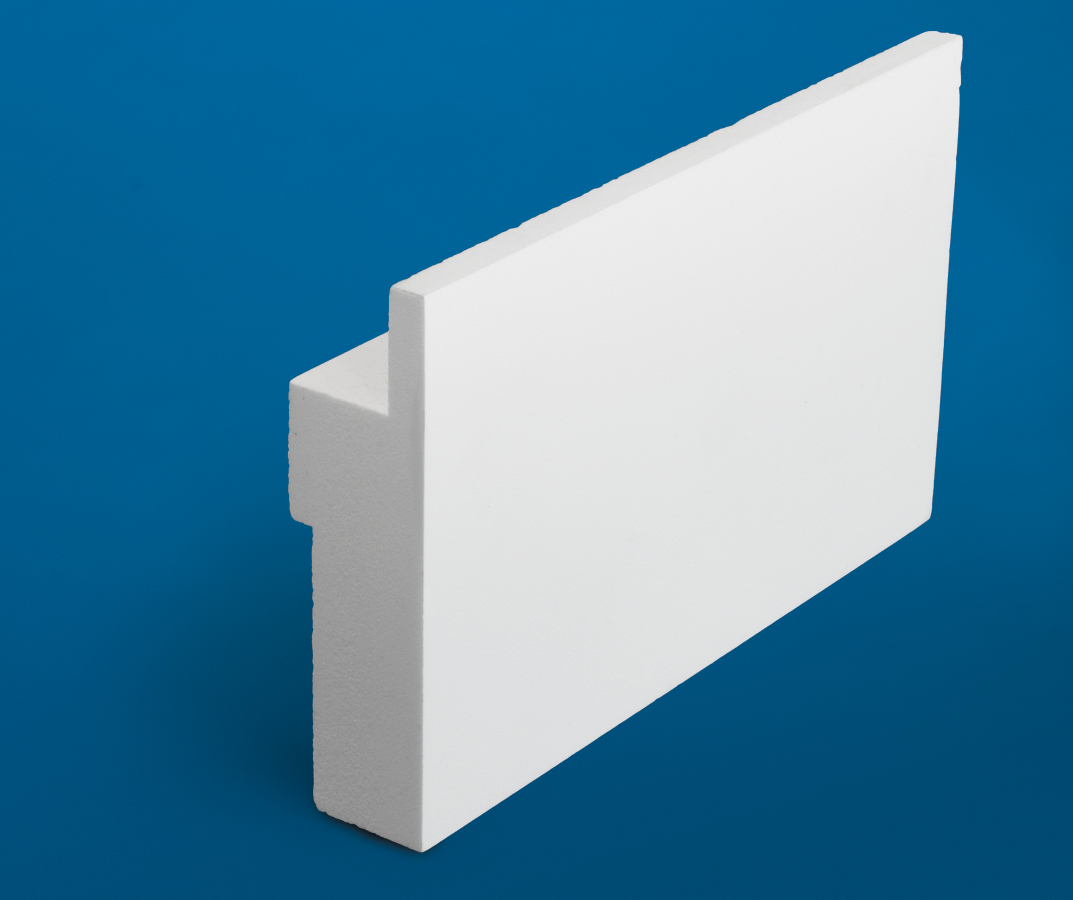CertainTeed achieved GreenCircle certification for its Restoration Millwork Exterior Trim, enhancing the sustainable appeal and environmental transparency of the product line.
The third-party certification was conducted by GreenCircle Certified, LLC, and the process included a comprehensive review of the manufacturing process and products, verifying the 21% recycled content of the product.
“Securing an independent third-party certification of the recycled content within our Restoration Millwork products reinforces our overarching commitment to environmental responsibility,” says Rick Brinton, marketing manager for Restoration Millwork at CertainTeed Siding Products Group. “In addition to GreenCircle certification, the long-lasting performance and durability of Restoration Millwork make it an ideal choice for sustainable building projects.”
In order to verify and certify recycled content claims, GreenCircle conducted a detailed evaluation of the Restoration Millwork product line and the company’s manufacturing operations in Social Circle, Ga. The claims were verified for conformance with International Organization for Standardization (ISO) 14021 Environmental Labels and Declarations requirements.
Made from cellular polyvinyl chloride, the full line of Restoration Millwork trim, beadboard and accessories is engineered to look, feel and work like top-grade lumber. Unlike wood, however, it is made with a long-lasting, low-maintenance material that is resistant to rotting, warping, moisture and insects. It can be cut using ordinary woodworking tools and fastened with nails or screws. It is highly resistant to yellowing caused by UV rays, resists freezing during winter months, features a Class A (Class 1) flame spread classification and is backed by a 25-year limited warranty. +
Related Stories
| Feb 15, 2011
Iconic TWA terminal may reopen as a boutique hotel
The Port Authority of New York and New Jersey hopes to squeeze a hotel with about 150 rooms in the space between the old TWA terminal and the new JetBlue building. The old TWA terminal would serve as an entry to the hotel and hotel lobby, which would also contain restaurants and shops.
| Feb 15, 2011
New Orleans' rebuilt public housing architecture gets mixed reviews
The architecture of New Orleans’ new public housing is awash with optimism about how urban-design will improve residents' lives—but the changes are based on the idealism of an earlier era that’s being erased and revised.
| Feb 15, 2011
LAUSD commissions innovative prefab prototypes for future building
The LA Unified School District, under the leadership of a new facilities director, reversed course regarding prototypes for its new schools and engaged architects to create compelling kit-of-parts schemes that are largely prefabricated.
| Feb 15, 2011
New 2030 Challenge to include carbon footprint of building materials and products
Architecture 2030 has just broadened the scope of its 2030 Challenge, issuing an additional challenge regarding the climate impact of building products. The 2030 Challenge for Products aims to reduce the embodied carbon (meaning the carbon emissions equivalent) of building products 50% by 2030.
| Feb 15, 2011
New Urbanist Andrés Duany: We need a LEED Brown rating
Andrés Duany advocates a "LEED Brown" rating that would give contractors credit for using traditional but low cost measures that are not easy to quantify or certify. He described these steps as "the original green," and "what we did when we didn't have money." Ostensibly, LEED Brown would be in addition to the current Silver, Gold and Platinum ratings.
| Feb 15, 2011
AIA on President Obama's proposed $1 billion investment in energy conservation
The President’s budget increases the value of investment in energy conservation in commercial buildings by roughly $1 billion, reports AIA 2011 President Clark Manus, FAIA. The significant increase from the current tax deduction of $1.80 per sq. ft. now on the books is an increase for which the AIA has been advocating in order to encourage energy conservation.
| Feb 14, 2011
Sustainable Roofing: A Whole-Building Approach
According to sustainability experts, the first step toward designing an energy-efficient roofing system is to see roof materials and systems as an integral component of the enclosure and the building as a whole. Earn 1.0 AIA/CES learning units by studying this article and successfully completing the online exam.
| Feb 11, 2011
Four Products That Stand Up to Hurricanes
What do a panelized wall system, a newly developed roof hatch, spray polyurethane foam, and a custom-made curtain wall have in common? They’ve been extensively researched and tested for their ability to take abuse from the likes of Hurricane Katrina.













